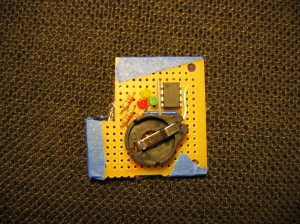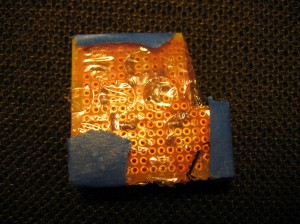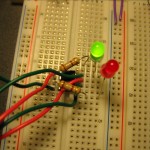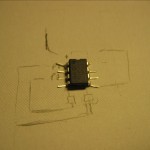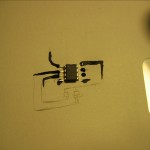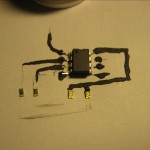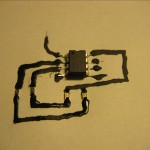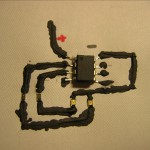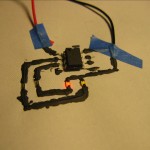So two Saturdays ago I tried to make a some simple LED “bling” as fast as I could (from scratch). All told it took about 4hrs from start to finish (including firmware and soldering). The result is 3 LEDs (red, green and yellow) controlled by a PIC12F675 and running from a 3V lithium coin cell (CR1620). The LEDs brightness follows a sine wave with a period of ~ 1 second, and with each LED offset from the other by 1/3 of a period. As a result the LEDs seem to chase each other, only with a much nicer effect then your normal on/off chase. Here as one fades out, another is fading in, and the third is at nearly full brightness.
The whole board runs for about 24hrs w/o issue. If I disabled the brown-out detector, I think it would run for more like 48hrs, though the last 12 might not be that great. With the brown-out detector enabled, the LEDs start to flicker. This is because the voltage drops under load, so the detector trips, reseting the PIC. This causes the load to become less, so the voltage rises, the brown-out detector release the PIC from reset and then the whole processes repeats.
The back of the board is covered in static-free bubble wrap. I have been starting to cover my boards in the bubble wrap every since I put a board down on a pair of metal pliers and shorted a bunch of traces, frying the board. I just use the static-free bubble wrap that parts I order come with. Its also a nice way to reuse the material (instead of recycling it).
You can download the source code for the firmware (also contains a compiled binary). It’s written for HI-TIDE and PICC-lite, both by HI-TECH.
Front of Bling Board
Back of Bling Board
